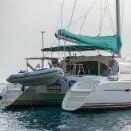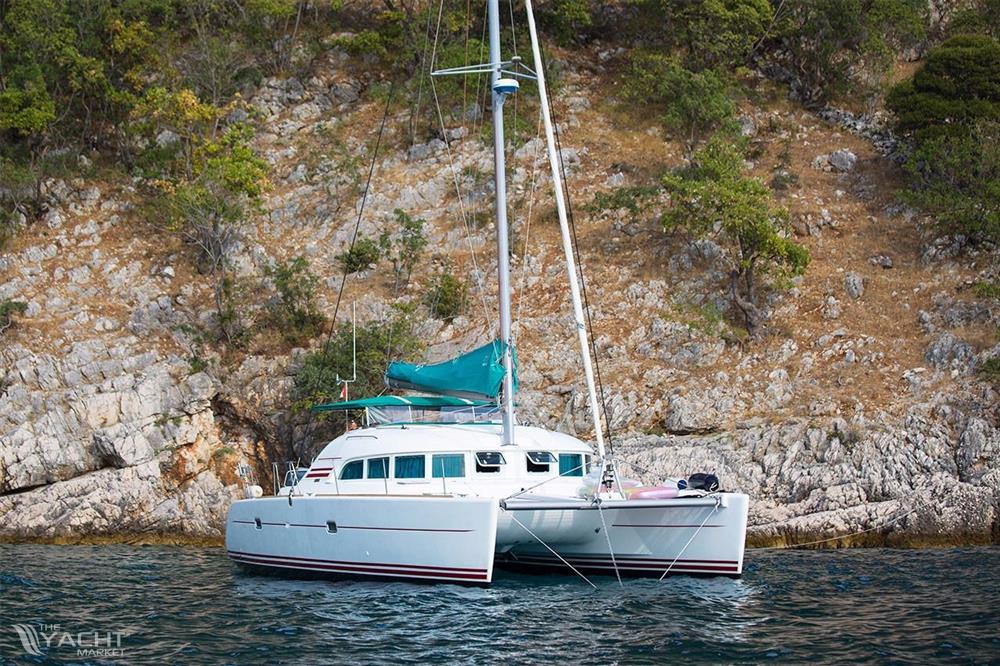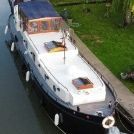-
Posts
45,830 -
Joined
-
Last visited
-
Days Won
130
Alan de Enfield last won the day on April 19 2024
Alan de Enfield had the most liked content!
Profile Information
-
Gender
Male
-
Location
N. Wales
-
Occupation
Porn Star
-
Boat Name
Which one ?
-
Boat Location
Floating
Recent Profile Visitors
Alan de Enfield's Achievements
-

Rust patches or microbial / MIC?
Alan de Enfield replied to Jamesl9's topic in Boat Building & Maintenance
** or, suggested by someone prepared to accept the evidence as fact (According to the scientific papers & supported by documented evidence). -
Nigel Moore rip had the opposite view of the same clause : As I construe the various Acts, they DO have the force of law behind them. It cannot properly be said that the 1995 Act “exactly . . .says” that “if you have a home mooring you can stay anywhere on the towpath for as long as you want then and never need to move.” It is true that “ ‘move every 14 days’ is explicitly only detailed in the act for those with no home mooring”, but that does not imply absence of restriction for those with home moorings. From the very first enabling Acts, the towpath was not to be obstructed; it had to be available to all for the use it was designed for – accordingly, overnight stays would have been the only (perhaps) tolerated use for mooring. In one of the major canal company’s Acts, in fact, pleasure boats were even banned from ANY use of the towpath (and that clause has never, to my knowledge, been explicitly rescinded). Over the latter part of the 20th century, longer temporary use of the towpath for mooring became tolerated on a pragmatic basis, with 14 days fixed upon as a rough guideline for reasons lost in obscurity (for all that BW came up with postulated origins during the Select Committee hearings on the 1990 Bill). Obstruction remains on the statute books as an offence, updated even in the 1995 Act, and overstaying stated times on selected sections has been used with County Court approval to qualify the boat – being thereby regarded as an obstruction - for being moved under s.8(5) of the 1983 Act. Anything longer than an overnight stay, as I see it, is simply permissive – with the exception of boats without home moorings, for whom only, the right to 14 days (or more if circumstances dictate) is enshrined in law. For boats with home moorings when cruising away from those, the 14 day limit would apply only as a permissive one based on a fair-play comparison with the ‘continuous cruisers’. It is simply, in other words, that CaRT would find difficulty in justifying the application of differing standards based only on the nature of the boat licence application. To suggest that any boat was legally free from constraint over use of the towpath is unjustifiable.
-

A million questions narrowed down to a few, for now :)
Alan de Enfield replied to Boater floater's topic in New to Boating?
Wouldn't that be "boppety-boppety-boppety".... -

Are these reliable? Two-way grey water manifold.
Alan de Enfield replied to Baralacha's topic in Boat Building & Maintenance
That is one thing we agree on ! -

Should I use Surveyor Recomended by Marina
Alan de Enfield replied to appo's topic in New to Boating?
And this was the reason a boat sank on the Thames : 1) The survyor said he thought the waterline was xxx and it wasn't 2) The buyer relied on the sellers survey The buyer of the MINI MOO bought the boat on the strength of a survey report provided by the seller. The marine surveyor concerned had estimated the height of the engine air intake jalousie from water level marks on the hull although the vessel had been out of the water for a considerable time prior to his survey. He had estimated the intake to be 200 mm above the waterline but when it measured after the salvage it was only 65 mm. The marine surveyor had covered himself with the caveat that it was an estimate only. In that particular case, when the vessel sank, no life jackets were on board and at least one person on board could not swim. The survivors were very lucky that nearby boats managed to pluck them from the water immediately. The fact that a marine surveyor’s report perhaps covers him with words such as estimated does not provide much comfort if bodies have to be pulled from the water. -

Are these reliable? Two-way grey water manifold.
Alan de Enfield replied to Baralacha's topic in Boat Building & Maintenance
I think I counted 11 hull openings below the water line on my boat. 2 engine water inlets (1 per engine) 2 engine water outlets - exhausts (1 per engine) 2 toilet water inlets (1 per toilet) 2 toilet water outlets (1 per toilet) 1 speed/log opening 1x pump-out (at sea) dump for grey & black water 1x inlet for deck-wash / hose pipe Above the waterline are others Eberspacher exhaust 2x 'telltales' (1 for each engine) Anchor locker drain -

Are these reliable? Two-way grey water manifold.
Alan de Enfield replied to Baralacha's topic in Boat Building & Maintenance
One big difference being that sea-boats will have 'stop taps' (sea-cocks) on all their inlets / outlets where they go thru the hull, so, at the slightest leak they can be completely closed off. You will also generally find, stored alongside each sea-cock a suitable sized wooden cone (plug) that can be pushed into the valve, if due to corrosion etc the valve fails. -

Rust patches or microbial / MIC?
Alan de Enfield replied to Jamesl9's topic in Boat Building & Maintenance
What would be your suggestion for preventative maintenance ? Have you boat lifted out and thickness checked every 4 months ? Waiting for 2+ years between blacking and you could end up with a submarine The examples of 'finding MIC' on forumites boats has been more a case of luck, eg going from 6mm+ to 2mm in 18 months (Keeping up) and 8mm to 2mm (manxmike) -

Rust patches or microbial / MIC?
Alan de Enfield replied to Jamesl9's topic in Boat Building & Maintenance
-

Rust patches or microbial / MIC?
Alan de Enfield replied to Jamesl9's topic in Boat Building & Maintenance
Are you suggesting that the quoting of forum members who have suffered the problem, along with numerous scientific papers (including their author and titles so they can be viewed) is scare mongering - maybe the information should be supressed to avoid upsetting the inland waterways deniers? Ask @matty40s how many cases he is personally aware of ? (I seem to remember he has commented on several) Macrobiological attack is the well known phenomenon of mussels, barnacles, slimes, grasses and seaweeds attaching to the hull. These items do not usually cause serious harm to the metal but they can and do slow the boat down and increase the fuel consumption for a given speed. They are more or less satisfactorily dealt with by scrubbing the hull clean and coating with a suitable antifouling paint. However, there is a different kind of corrosion which is also found on boat hulls, particularly those lying in water such as canals or rivers containing decaying vegetable matter. Very few people are aware of the problem or that it is caused by micro-biological attack MIC is a highly unpredictable process but the marine surveyor should realise that, under the influence of microorganisms, corrosion processes can happen in a matter of months compared to the years it would take for ordinary abiotic corrosion to reach serious proportions. Further, also due to its unpredictability, it is often difficult to include microbiologically induced corrosion in risk analyses and, more often than not, its possibility is not even considered in a vessel’s design phase. The impact can be enormous and an estimated 20% of all corrosion damage is caused by micro-organisms leading to costs as high as 2-5% of GDP.. Or, in other words, metal worm.................................................... These organisms are commonly found in ballast tanks where the boat has ballasted by taking on muddy river water or lying in the mud of harbours or in the waters of canals particularly those running through farm land where surface water often deposits chemical fertilizers into the canal. Souce : Microbial Attack on Iron and Steel or What’s Eating You? -

Rust patches or microbial / MIC?
Alan de Enfield replied to Jamesl9's topic in Boat Building & Maintenance
I have various technical documents that say the same thing -but - it is no use just moving away whulst the spreading is being done, you will need to give the water several days to 'move on' particularly if on a virtually still canal. A couple of threads from forum members who have suffered with it : It was 1st found in the bilges of sea going vessels in the 60s and examples showing it to be capable of 'eating thru' in 22mm of steel hull per annum . It is a major problem which has always been denied by the inland waterways experts - however more and more evidence is coming to light that it truly is a problem. Boat owners and yards know all about rust. There is endless literature on electro-chemical and galvanic corrosion – all under the general heading of ‘rust’. But there are other types of corrosion which closely resemble (but are not) rust in the conventional sense about which little is known by boat owners and by many yards. This is a corrosion caused by microbiological action which is can occur on boat hulls, particularly those lying in canals or rivers containing high levels of chemicals or decaying vegetable matter. Microbially Induced Corrosion (MIC) is a highly unpredictable process but under the influence of micro-organisms, corrosion processes can be rapid, happening in a matter of months compared to the years it would take for ordinary abiotic corrosion to reach serious proportions. This phenomenon is well known in the oil, gas, water and mining industries but is little understood in the steel boating world. MIC frequently occurs in areas with high nitrate content in the water – this particularly pertains to arable regions of the canal network and particularly to canals and rivers on the east side of the UK and where there is intensive crop farming using non organic chemical fertilizers with consequential phosphate, sulphate and nitrate run-off into the watercourses. Marinas fed by rivers are another risk area and, in salt water environments, it is well known that harbour muds are highly contaminated by sulphides produced by these creatures. Sulphide films are, by their very nature, highly corrosive and the identification of such very obvious. It is usually found under muddy and slimy surfaces, sometimes even behind paint coatings and a very careful visual inspection is necessary to locate it. It is not discoverable by non-destructive testing such as ultrasonic thickness measurement, eddy current testing or the magnetic method familiar to most marine surveyors. The bacteria are often found inside oxidised welds or in areas which contain physical defects such as porosity, overlap or lack of penetration. The microbes leading to this condition can both cause corrosion from beneath existing coatings or seek out pinpricks in the steel coating and cause the reaction to occur from the outside. MIC bacteria can be present under previous blackings and is not eradicated by simple pressure washing. Unless correctly treated, MIC can continue to thrive beneath the coating, emerging as major pitting. If a hull is found with evidence of microbial attack, it is necessary to deal with it to try to prevent it recurring. A simple solution is for the whole area to be washed with copious amounts of high pressure fresh water. When dry the area affected should be coated with a strong bleaching agent (sodium hypochlorite) diluted 1:4 with water and left for twenty four hours. Afterwards a second high pressure fresh water wash is necessary followed by recoating. This will probably remove around 90% of the microbes but the only real solution is to blast back to bare steel and to treat any inaccessible areas such as tack-welded rubbing strakes as best one can with the bleach solution before applying the next stage of the coating process. The main problem is that the microbes can continue to live beneath the existing paint coatings and once sealed in with a fresh blacking, the lack of oxygen and light is the perfect environment for them to thrive leading to a risk of corrosion from the inside out. No coatings are entirely proof against a microbial attack from the exterior. Minute pinpricks, mechanical damage below the waterline are all opportunities for the microbes to penetrate the steel and commence the process from the outside in.. WARNING SODIUM HYPERCHLORITE IS HIGHLY CAUSTIC AND TOXIC. IT MUST BE TREATED WITH GREAT CARE AND RUBBER GLOVES, WELLINGTON BOOTS AND EYE SHIELDS ARE ESSENTIAL. FINAL FINISHING If the pressure washing has exposed areas of bare steel, it is recommended that a zinc-phosphate rust prevention system such as Fertan be applied. This should be allowed to work over a 24 hour period and MUST be thoroughly washed off with water and a brush to ensure that only the bare steel retains the Fertan before a top coat of Keelblack is applied. This is essential to ensure that any subsequent coating is properly attached to the hull. Nevertheless, the microbes can still live underneath adjacent prior paint coatings so the only certain way to remove the risk of future attacks is by blasting back to bare steel – an expense many owners may not wish to contemplate. Bibliography International Institute of Marine Surveyors: A brief introduction to iron and steel, testing, ferrous corrosion and cathodic protection by Alan Broomfield M.I.I.M.S. https://www.iims.org.uk/wp-content/uploads/2014/03/Introduction-to-iron-and-steel-testing-ferrous-corrosion-and-cathodic-protection.pptx. American Society for Microbiology: Corrosion of Iron by Sulfate-Reducing Bacteria: New Views of an Old Problem http://aem.asm.org/content/80/4/1226.full Port Technology: Microbiological contribution to accelerated low water corrosion of support piles https://www.porttechnology.org/technical_papers/microbiological_contribution_to_accelerated_low_water_corrosion_of_support Corrosion Doctors: Corrosion Theory. http://corrosion-doctors.org/Principles/Theory.htm -

Should I use Surveyor Recomended by Marina
Alan de Enfield replied to appo's topic in New to Boating?
Only in Reform majority council areas (apparently) -

Should I use Surveyor Recomended by Marina
Alan de Enfield replied to appo's topic in New to Boating?
You cannot say that - apparently there are now 26 legally recognised genders in the UK















